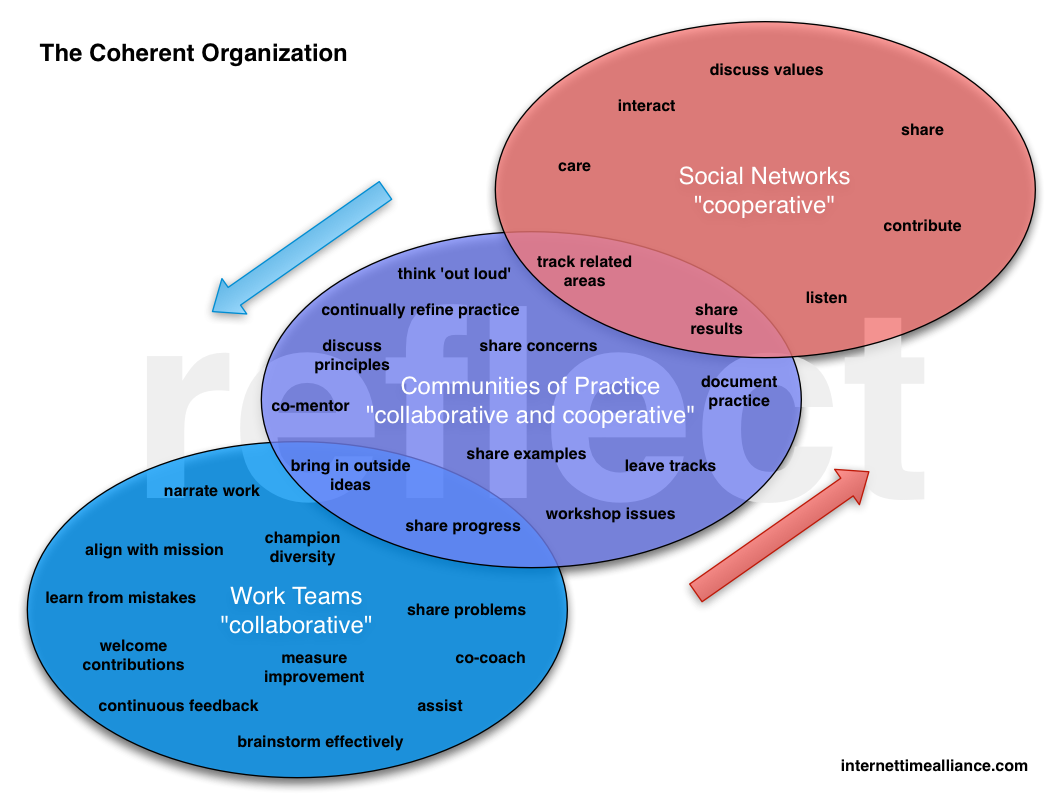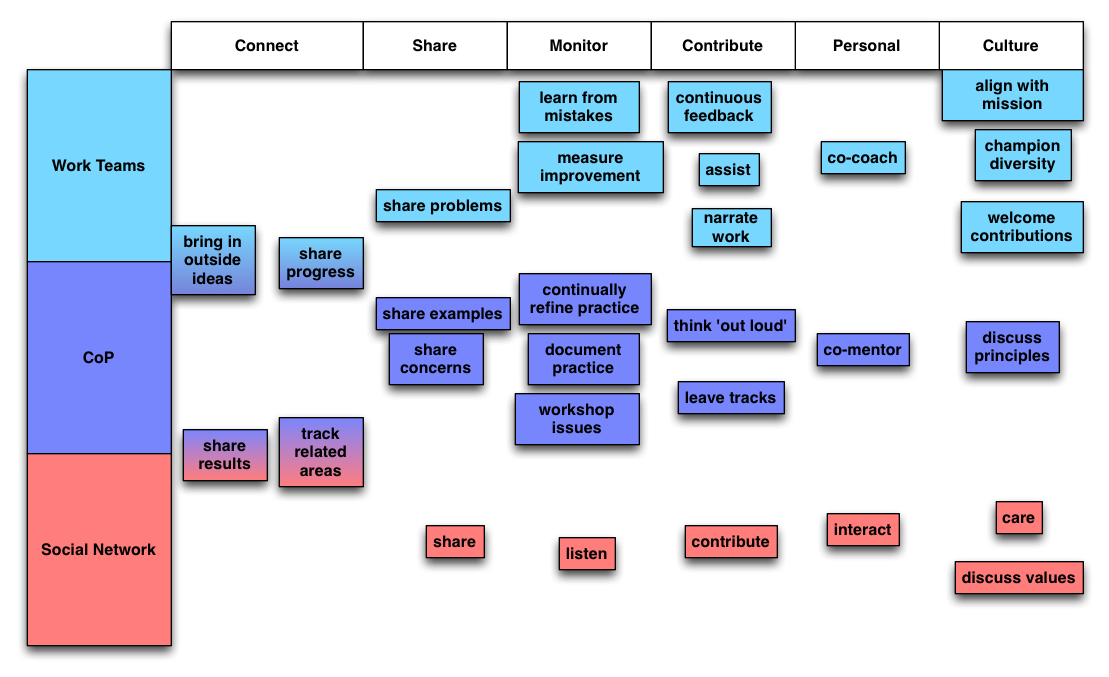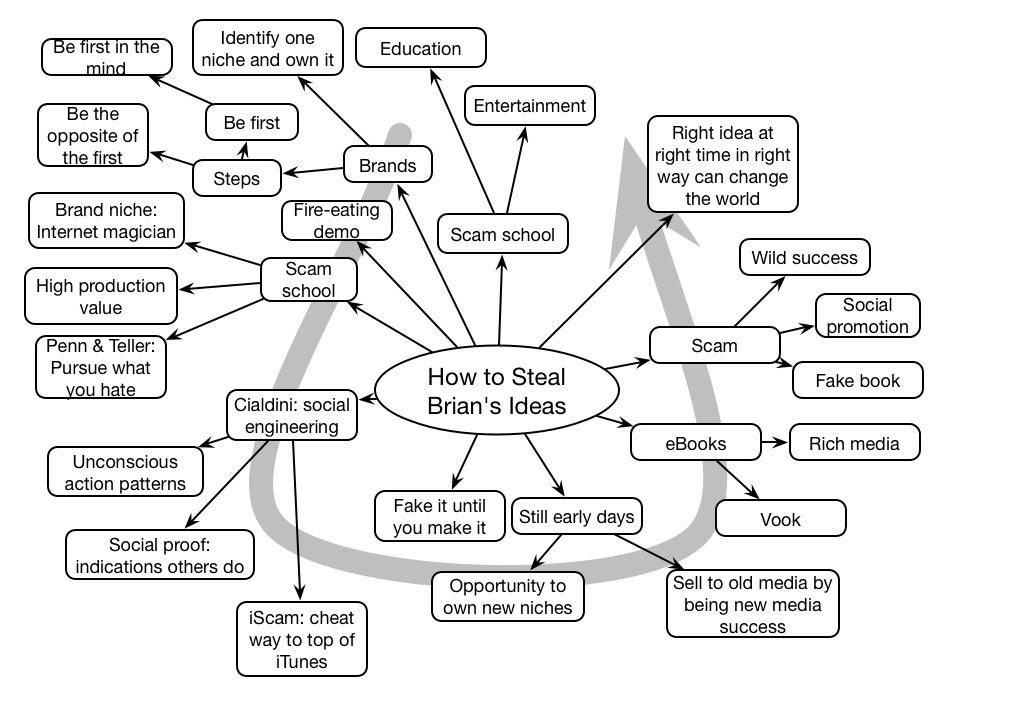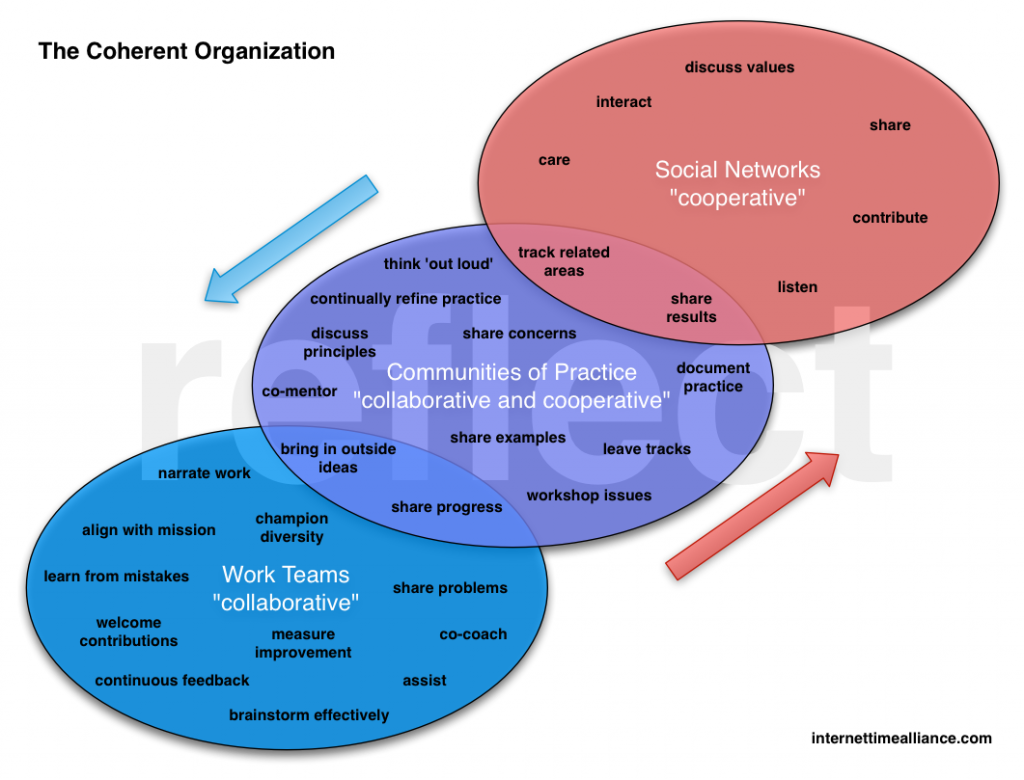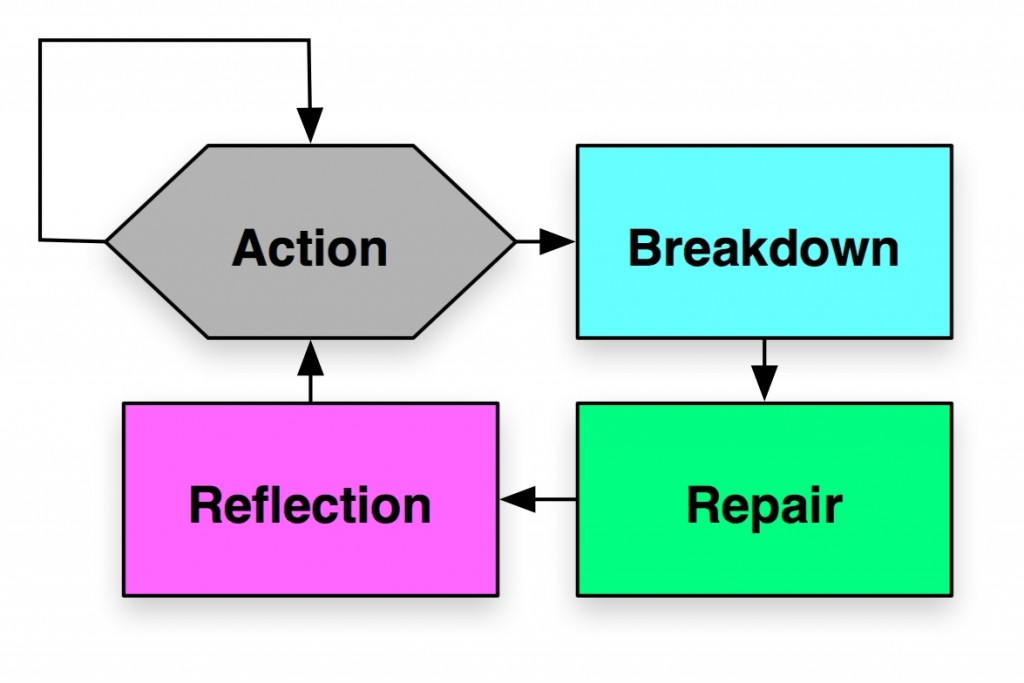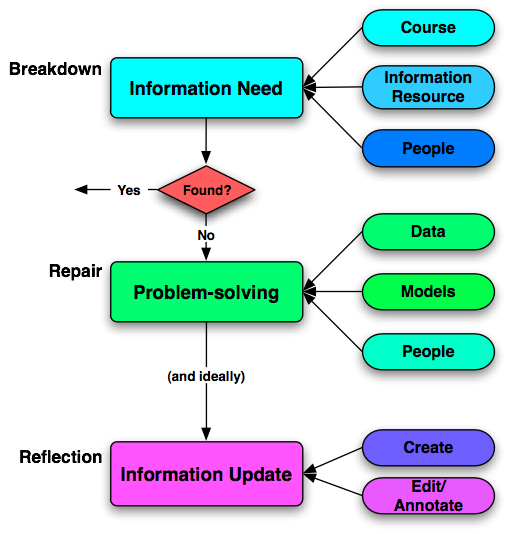The Principals of the Internet Time Alliance decided to take a collective look ahead to the new year, and share our predictions. You‘ll see overlap but also unique perspectives:
Charles Jennings
 An increasing number of organisations, independent of size, nature or location, will acknowledge that their traditional training and development models and processes are failing to live up to the expectations of their leaders and workforce in a dynamic and global marketplace. Some will take steps to use their financial and people resources and exploit new ways of working and learning. Others will be hamstrung with outdated skills, tools and technologies, and will be too slow to adapt. A confluence of technology and improved connectivity, increasing pressures for rapid solutions and better customer service, and demands for higher performance, will force the hands of many HRDs and CLOs to refocus from models of ‘extended formal training‘ to place technology-enabled, workplace-focused and leader-led development approaches at the core of their provision. We will move a step or two closer to real-time performance support at the point of need.
An increasing number of organisations, independent of size, nature or location, will acknowledge that their traditional training and development models and processes are failing to live up to the expectations of their leaders and workforce in a dynamic and global marketplace. Some will take steps to use their financial and people resources and exploit new ways of working and learning. Others will be hamstrung with outdated skills, tools and technologies, and will be too slow to adapt. A confluence of technology and improved connectivity, increasing pressures for rapid solutions and better customer service, and demands for higher performance, will force the hands of many HRDs and CLOs to refocus from models of ‘extended formal training‘ to place technology-enabled, workplace-focused and leader-led development approaches at the core of their provision. We will move a step or two closer to real-time performance support at the point of need.
Clark Quinn
 We‘ll see an increasing use of mobile, and some organizations will recognize the platform that such devices provide to move the full suite of learning support (specifically performance support and informal learning) out to employees, dissolving the arbitrary boundaries between training and the full spectrum of possibilities. Others will try to cram courses onto phones, and continue to miss the bigger picture, increasing their irrelevance. Further, we‘ll see more examples of the notion of a ‘performance ecosystem‘ of resources aligned around individual needs and responsibilities, instead of organized around the providing silos. We‘ll also see more interactive and engaging examples of experience design, and yet such innovative approaches will continue to be reserved for the foresightful, while most will continue in the hidebound status quo. Finally, we‘ll see small starts in thinking semantic use in technology coupled with sound ethnographic methods to start providing just such smart support, but the efforts will continue to be embryonic.
We‘ll see an increasing use of mobile, and some organizations will recognize the platform that such devices provide to move the full suite of learning support (specifically performance support and informal learning) out to employees, dissolving the arbitrary boundaries between training and the full spectrum of possibilities. Others will try to cram courses onto phones, and continue to miss the bigger picture, increasing their irrelevance. Further, we‘ll see more examples of the notion of a ‘performance ecosystem‘ of resources aligned around individual needs and responsibilities, instead of organized around the providing silos. We‘ll also see more interactive and engaging examples of experience design, and yet such innovative approaches will continue to be reserved for the foresightful, while most will continue in the hidebound status quo. Finally, we‘ll see small starts in thinking semantic use in technology coupled with sound ethnographic methods to start providing just such smart support, but the efforts will continue to be embryonic.
Harold Jarche
 People who know nothing about connectivism or collaborative learning will profit from MOOC‘s. Academics and instructional designers will tell anyone who wants to listen just how important formal training is, as it fades in relevance to both learners and businesses.The ITA will keep on questioning the status quo and show how work is learning and learning is the work in the network era – some will listen, many will not.
People who know nothing about connectivism or collaborative learning will profit from MOOC‘s. Academics and instructional designers will tell anyone who wants to listen just how important formal training is, as it fades in relevance to both learners and businesses.The ITA will keep on questioning the status quo and show how work is learning and learning is the work in the network era – some will listen, many will not.
Jane Hart
 Many traditional-thinking organisations will waste a lot of time and energy trying to track social interventions in the hope that they can control and manage “social learningâ€. Whilst those organisations who appreciate that social learning is a natural and continuous part of working, will acknowledge that the most appropriate approach they can take is simply to support it in the workplace – both technologically and in terms of modelling new collaborative behaviours. Meanwhile, we will continue to see individuals and teams bypass IT and T&D departments and solve their learning and performance problems more quickly and easily using their own devices to access online resources, tools and networks.
Many traditional-thinking organisations will waste a lot of time and energy trying to track social interventions in the hope that they can control and manage “social learningâ€. Whilst those organisations who appreciate that social learning is a natural and continuous part of working, will acknowledge that the most appropriate approach they can take is simply to support it in the workplace – both technologically and in terms of modelling new collaborative behaviours. Meanwhile, we will continue to see individuals and teams bypass IT and T&D departments and solve their learning and performance problems more quickly and easily using their own devices to access online resources, tools and networks.
Jay Cross
 2013 will be a great year. As William Gibson wrote, “The future‘s already here. It‘s just not evenly distributed yet.†The business world will become a bit more complex — and therefore more chaotic and unpredictable. Moore‘s Law and exponential progress will continue to work their magic and speed things up. Learning will continue to converge with work. Increasingly, workers will learn their jobs by doing their jobs. The lessons of motivation (a la Dan Pink) and the importance of treating people like people will sink in. Smart companies will adopt radical management, putting the customer in charge and reorganizing work in small teams. Senior people will recognize that emotions drive people — and there are other emotions in addition to passion. Happy workers are more engaged, more productive, and more fulfilled. What‘s not to like?
2013 will be a great year. As William Gibson wrote, “The future‘s already here. It‘s just not evenly distributed yet.†The business world will become a bit more complex — and therefore more chaotic and unpredictable. Moore‘s Law and exponential progress will continue to work their magic and speed things up. Learning will continue to converge with work. Increasingly, workers will learn their jobs by doing their jobs. The lessons of motivation (a la Dan Pink) and the importance of treating people like people will sink in. Smart companies will adopt radical management, putting the customer in charge and reorganizing work in small teams. Senior people will recognize that emotions drive people — and there are other emotions in addition to passion. Happy workers are more engaged, more productive, and more fulfilled. What‘s not to like?
